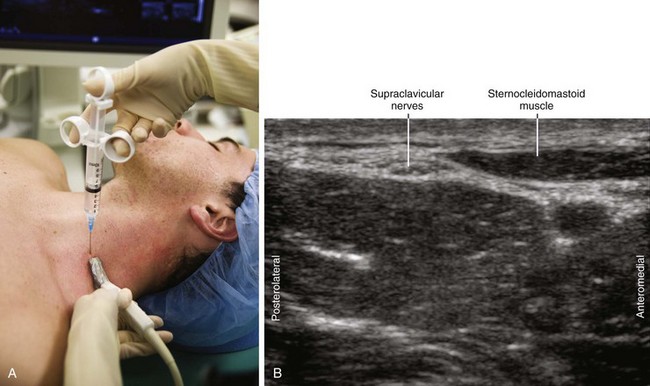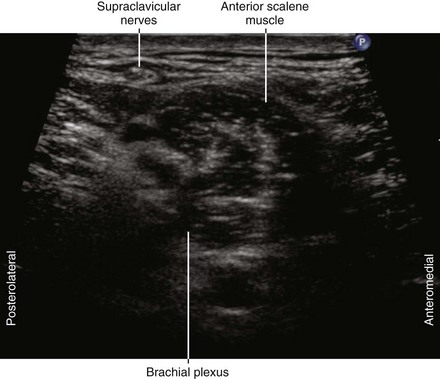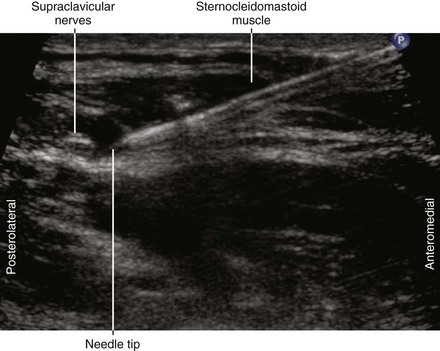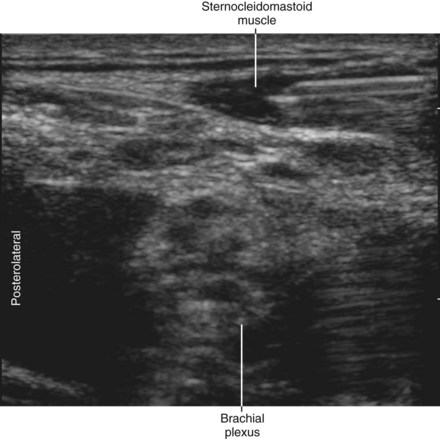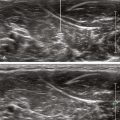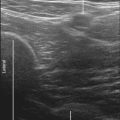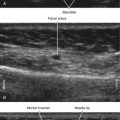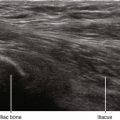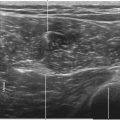26 Supraclavicular Nerve Block
The supraclavicular nerve (SCN) is a branch of the superficial cervical plexus (see Fig. 60-1). It arises from the third and fourth cervical ventral rami and divides into three branches: medial, intermediate, and lateral. These branches are about 1 to 2 mm in diameter. The intermediate branch can in some cases be palpated over the midportion of the clavicle. The nerve has sensory fibers to the clavicle and shoulder, the chest wall to the level of the second rib, and the acromioclavicular and sternoclavicular joints. The supraclavicular branches usually pass over the clavicle but in some cases can actually travel through the clavicle. Block of the SCNs is useful for pain relief from shoulder or clavicle surgery.1,2
Suggested Technique
The traditional supraclavicular block of the brachial plexus is not considered adequate for shoulder surgery.3 Sensory blockade of the supraclavicular and axillary nerves has slower onset for the traditional supraclavicular technique compared with the interscalene technique of brachial plexus anesthesia. However, ultrasound-guided infiltration of local anesthetic for SCN block can augment low interscalene or supraclavicular blocks for shoulder surgery. The SCN is typically located over the prevertebral fascia and brachial plexus near the clavicle. SCN block is generally performed after the brachial plexus block.
Clinical Pearls
• The incidence of the SCN branches piercing the clavicle is 1% to 4%.4 In some of these cases, the bony foramina are large enough to be visible on chest radiographs.
• Interscalene blocks often result in SCN block because the local anesthetic tracks to C4 within the interscalene groove.3 This is less likely or has slower onset with supraclavicular blocks of the brachial plexus. SCN blocks can be assessed along the skin surface over the clavicle.
1 Choi DS, Atchabahian A, Brown AR. Cervical plexus block provides postoperative analgesia after clavicle surgery. Anesth Analg. 2005;100:1542–1543.
2 Maybin J, Townsley P, Bedforth N, et al. Ultrasound guided supraclavicular nerve blockade: first technical description and the relevance for shoulder surgery under regional anaesthesia. Anaesthesia. 2011;66(11):1053–1055.
3 Lanz E, Theiss D, Jankovic D. The extent of blockade following various techniques of brachial plexus block. Anesth Analg. 1983;62:55–58.
4 Tubbs RS, Salter EG, Oakes WJ. Anomaly of the supraclavicular nerve: case report and review of the literature. Clin Anat. 2006;19:599–601.

